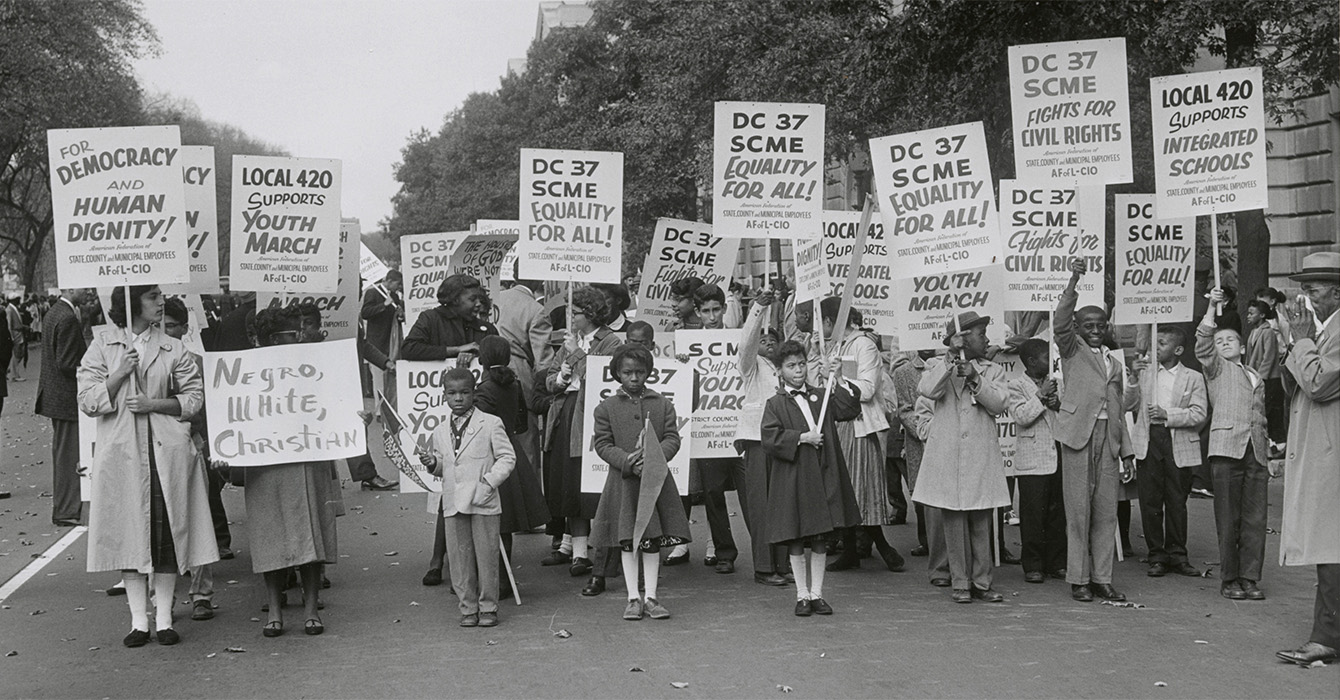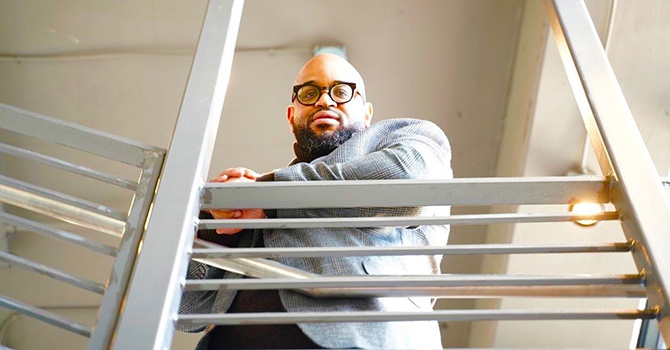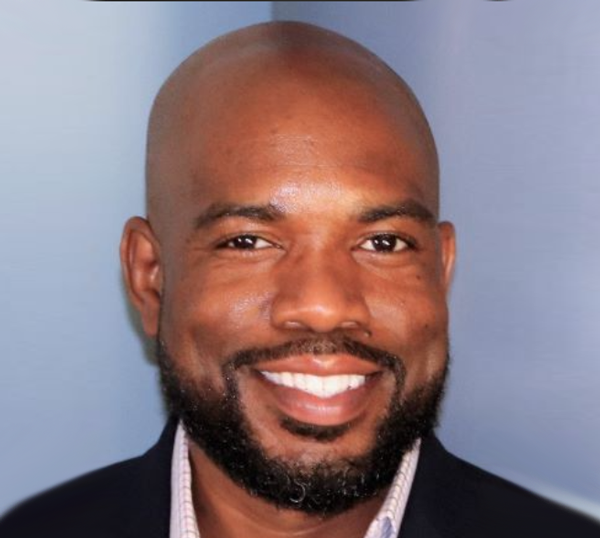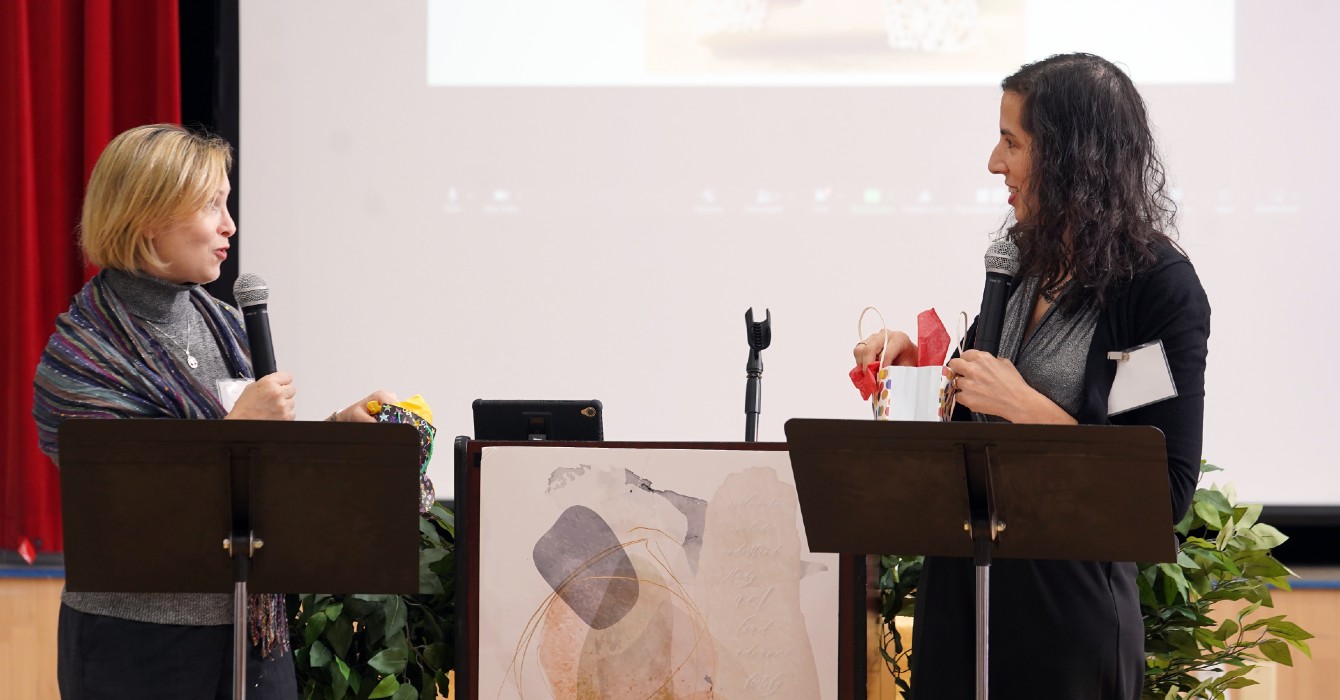Just south of San Antonio’s historic downtown district, the interstate highway is an unlovely stretch of used-car lots, fast-food restaurants and industrial parks. After a few miles, the urban sprawl starts to fade and the rural character of San Antonio’s Southside starts to emerge.
A sign for Baptist University of the Américas (BUA) directs visitors off the highway and into the neighborhood where the school has been located since 1964.
The main 12-acre campus is a tidy group of two-story red brick buildings with white columns. Hurricane fencing defines the perimeter, and a guard station sits next to the main entrance.
With no quad or greenbelt to shield it from the busy highway traffic, BUA is both highly accessible to the general public and, some would say, hidden in plain sight.
Unless you grew up Baptist in Texas, chances are you have never heard of BUA or any of its historical identities: the Mexican Baptist Bible Institute, the Hispanic Baptist Theological Seminary or the Hispanic Baptist Theological School.
The school’s fortunes have waxed and waned during its history. But with a renewed commitment to high-quality education that began in 1999, this low-profile school is beginning to have a big impact.
Although BUA is the smallest Baptist school in Texas, with about 225 students, it enrolls more Latinos in B.A. degree programs in theology than the other eight Baptist-affiliated schools in Texas combined. Many graduates are the first in their families to go to college, and almost one-quarter of the student body is international.
“Our story is inspiring, but not if it’s unknown,” said Vice President for Development Teo Cisneros, at a recent fundraising dinner, where school officials told BUA’s story to listeners both familiar and new.
It’s a story that is unfolding today, as BUA strives to live into a new vision as an accessible, community-focused and evangelical institution of higher education deeply rooted in Latino culture.
“For years and years, this school was very content with being a close-knit, closed institution that nobody knew about,” said BUA President René Maciel, who came on board in 2007. “That’s changed quite a bit. That’s only going to help us. It’s going to provide more opportunities for our students to be ministers of the gospel.”
‘Every day…I’m preaching the gospel’
Viviana Triano, a 2004 graduate, is both exceptional and typical of BUA students. A native of Colombia, her first year at BUA was spent in an English as a Second Language program. Later she went on to Baylor University for masters’ degrees in social work and ministry.
Triano now works at an advocacy center for crime victims and children in Waco. She is the center’s only bilingual counselor, and her days are filled with crisis intervention, counseling, court visits and supervision for counselors-in-training.
Though her center is not faith-based, she has a strong feeling that her work is her ministry.
“I feel every day that I’m preaching the gospel, because I’m bringing good news to people in such a desperate time of life by telling them that we are there for them, that they are not alone,” Triano said.
Triano reflects the goals Maciel has for BUA students: that they receive a high-quality education and that they serve God.
“I always tell our students, ‘God calls us sometimes to the church, but sometimes God also calls us to ministries outside the church,’” Maciel said. “You don’t have to serve God just in a church setting.”
Community service and outreach
BUA registered 233 students in the 2011 spring semester, the majority of them enrolled in one of three B.A. degrees -- biblical and theological studies, Spanish and business leadership. It also offers an associate degree in cross-cultural studies.
The school also serves as the headquarters for the Spanish-language diploma programs known as the Instituto Biblico Bautista. The BBI includes locations within the U.S., Latin America and South Africa.
That modest enrollment belies BUA’s steady growth over the past few years, as well as the changing character of its student body, which is growing younger and becoming more typical of a college campus.
Under Maciel’s leadership, BUA has embraced community service and outreach, while continuing to emphasize cross-cultural competencies for its increasingly diverse student body.
“I want our students to graduate with an understanding of how that connection to the community allows us to have ministry as well,” Maciel said.
BUA students are required to complete a Christian service component; Maciel himself mentors a student at a neighborhood high school.
“When I got here four years ago, it was really important for me to connect this institution with the community,” Maciel said. “We only become better ministers by involving ourselves in the community.”
Many of BUA’s students arrive unprepared for college-level work. They may not have a good command of English and may lack a high school diploma; many begin their studies by earning a GED. About 40 percent come from households below the poverty line, enrollment statistics show.
“Our students are different from the students at Hardin-Simmons or Baylor,” Maciel said.
Yet BUA holds onto its students. Marconi Monteiro, dean of academic affairs, said the semester-to-semester return rate has been between 81 and 86 percent for the past six years, and students find support that’s often lacking elsewhere. Tuition is typically about $4,500 per semester.
“They come here and find a nurturing community. People pay attention to them. Students will find their own mentor, then keep working with them,” said Nora Lozano, associate professor of biblical and theological studies.
Teachers push their brightest students -- including women, such as Viviana Triano -- to continue their education in graduate school.
The school recruits female students and nurtures them to be leaders, a role they have not traditionally played in Hispanic Baptist ministry, said Lozano. “Having faculty who are women just opens the imagination of our students.”
For all BUA students, having Latino role models is key to their success. Currently, about 80 percent of the students are Latino, including international students from Mexico, Spain and Central and South America.
“We are not just telling them, ‘Hopefully, one day you will make it.’ You see there are examples here of people who have gotten an education and degrees from important schools,” Lozano said.
”I’m always inspired by them,” Monteiro said. “What I would like to see is that they truly leave here with the sense that they are doing what God wants them to do, without a sense of limitations, yet with a realistic perspective.”
Change or close
Not too long ago, the sense of limitations was all too real. In 1999, the school -- then called the Hispanic Baptist Theological Seminary -- was at a crossroads.
Though its graduates served Baptist churches along both sides of the Texas-Mexico border, its non-accredited, pared-down diploma courses were drawing fewer and fewer students. On the eve of the 21st century, enrollment stood at just 43 students.
The numbers flew in the face of emerging demographic trends. From 2000 to 2010, the Hispanic population in Texas increased 42 percent to make up 38 percent of the population, according to the U.S. Census.
Although most Latinos in the U.S. are Catholic, Latino evangelicals -- a category that includes Texas Baptists -- make up about 15 percent of that growing Hispanic population, according to a 2007 survey by the Pew Forum on Religion & Public Life and the Pew Hispanic Center.
Despite this wave of growth, “the school went through a very difficult time, and it was pretty much dying,” said Maria Monteiro, a music professor who came to BUA in 2003.
Leaders faced a hard choice: change or close.
A dearth of Latino Christian leaders
Baptist University of the Américas had several things going for it, including the fact that it is no stranger to change. Survival is in its DNA.
Founded in 1947 by a Baptist missionary, the school was known until 1982 as the Mexican Baptist Bible Institute. It made its reputation among Texas Baptists by offering a solid vocational curriculum, but leaders say it has been chronically underfunded.
Instruction was in Spanish, and graduates worked predominantly in the Mexican-American community. For much of its history, the school has been affiliated with and supported by the Baptist General Convention of Texas (BGCT) and also had a brief, but vital, institutional affiliation with the Southwestern Baptist Theological Seminary in Fort Worth.
Among the 5,540 congregations of the BGCT, 1,045 are predominantly Hispanic, and Clay Price, a statistician with the denomination, estimates there are between 144,000 and 182,000 Hispanic Baptists in Texas.
“Most of the Hispanic pastors who are pastoring the border are graduates of this school,” said Francisco Ramos, a chemical engineer from Mexico who is studying at BUA for a second career in ministry.
By many accounts, the institution thrived during the early 1980s, offering a course of study comparable to a B.A. degree.
Then, in the 1990s, the BGCT asked leaders to do more to meet the needs of the growing Hispanic Baptist community, and the school reduced its curriculum to offer two-year diplomas.
The shift to quantity over quality was the wrong model, said Javier Elizondo, BUA’s executive vice president and provost.
More importantly, it sent the wrong message to Hispanic church communities and potential students. The failed experiment reflected a notion that Hispanic ministers working in the barrio didn’t need ministers “with top credentials and education,” Elizondo said.
“I pastored the barrio with a Ph.D. It’s not going to keep you from succeeding or from planting churches.
“You don’t educate down to the community. You bring it up. You bring in leaders who are able to transform the community,” Elizondo said.
Developing leaders is the key challenge in the Latino theological world as a whole, said Edwin Hernández, director of Notre Dame’s Center for the Study of Latino Religion.
“Across the country, it’s true for Catholics as well as evangelicals, there’s a dearth of well-trained Christian leaders who are Latino,” Hernández said. And because Latinos are both growing across denominations and lagging in educational achievement, there is a great deal of tension.
“Institutions like BUA and others are trying to provide a pipeline of services to meet the need for Latino religious leaders,” he said.
Higher expectations, more opportunities
In the spring of 1999, the board of trustees elected a new president to accomplish what would be the first critical steps in its revival.
Albert Reyes, a Baptist pastor with business experience, arrived that fall with a clear mandate: Develop a new four-year curriculum in biblical and theological studies, and obtain both certification and accreditation. (Reyes left BUA in 2006 and is now the president of Dallas-based Buckner International, a Christian aid organization.)
Reyes walked into an institution where leaders were questioning and uncertain about its future.
“My perspective was that we had a lot of time to make up -- a lot of lost ground -- to be relevant and contemporary to the beginning of the 21st century,” Reyes said in an interview.
Reyes soon began putting together a team of faculty and administrators with both excellent academic credentials and pastoral experience -- what he calls “professional practitioners.” Elizondo and the Monteiros were among his first hires.
“We had to do things differently,” Reyes said. “That means change.”
Probably the most traumatic of these changes took place in 2000, when the administration changed the official language of instruction from Spanish to English.
“The professors were not happy, because they preferred Spanish themselves,” Elizondo said. “The Baptist Hispanic community did not like it either, because they felt we were abandoning the culture.”
Though Spanish remains the language of the hallways, cafeteria and housing, the switch helped diversify the student body, opening up enrollment to English speakers, African Americans, international students and especially the many Latinos for whom Spanish is not their first language.
And for the many students for whom Spanish is a first language, switching to English as the language of instruction helped them become bilingual and bicultural. This, in turn, opened up job opportunities at Anglo and African-American churches, schools and other institutions.
In 2003, the university reached several milestones: It received certification to grant degrees from the Texas Higher Education Coordinating Board and was accredited by the Association for Biblical Higher Education.
It also adopted a new name: Baptist University of the Américas. This expressed a vision to be a leader in growing Latino leaders in the Baptist tradition. Fall enrollment in 2003 again topped 200.
Becoming a degree-granting, English-language, Baptist school would end up being a watershed step in BUA’s development. It meant that more would be expected of its students, but more would also be possible for their futures in terms of pursuing graduate education, sustaining a bi-vocational ministry, and becoming leaders and mentors for others.
“We thought that Baptist University of the Américas better communicated the type of education that we were striving for, for our students,” said Debbie Ferrier, who has served on BUA’s board for 10 years.
Telling the story
Still, funding is a constant struggle for the university. Today, BUA is diversifying its base of support by telling its story to civic and community organizations in San Antonio, as well as to Baptist audiences around Texas.
“Fifty-five percent of our budget comes through tuition and the BGCT,” Maciel said. “The rest has to be raised from donors.”
The campus holds “friends and donors” dinners nearly every month. Maciel often travels to meet with church leaders who may be interested in collaborating in some way.
Directly across the highway from its 12-acre campus, BUA owns an 80-acre parcel of land on which it has begun construction of a new campus that will eventually accommodate 1,000 students. The expanded campus will also offer services for its surrounding, impoverished community.
“We do not want to have much, but we want to have the best that we can have,” Marconi Monteiro said. “Our aspiration for the school is not to be ostentatious in what we have, but to be very intentional in what we do and to be generous in what we can give and provide our students.”
Building the new campus, Maciel said, is “a giant dream…It’s going to take several phases, but we have survived all these years …”
Questions to consider
Questions to consider:
- Baptist University of the Américas developed a vision of cross-cultural Christian leaders, which required a practical and controversial change in the school’s language of instruction. What is the vision for the impact of your institution? What core activities does that vision compel you to keep? What must change?
- BUA has had four names as its mission has changed over the years. Is there a new name that might fit your organization?
- Javier Elizondo insists that people who are poor have the right to be served by pastors with top credentials and education. Are there ways in which your institution has low expectations or standards, for the poor or for others?
- Through nurturing and mentoring BUA creates college-level opportunities in a community where educational attainment is low. In what ways could your organization offer such support to meet people’s needs?
- Graduate Viviana Triano said “every day I’m preaching the gospel” in her profession as a social worker. In what ways does your organization equip others to serve God, even if it’s not in a church-based ministry?












